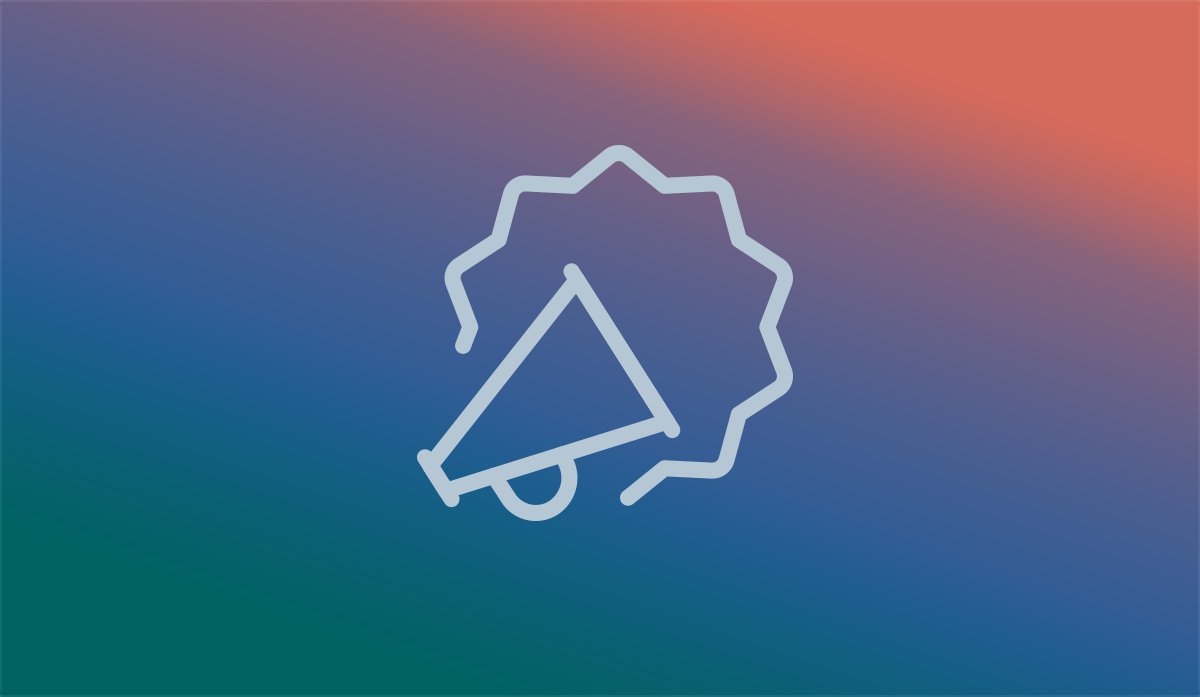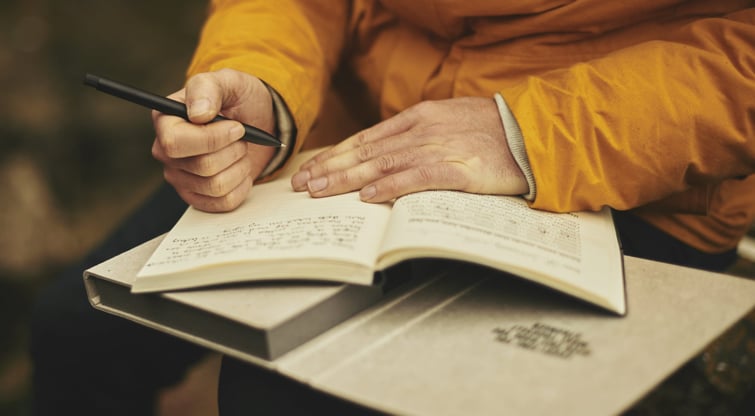
Note Taking Improves Workplace Skills
“The best moments in reading are when you come across something – a thought, a feeling, a way of looking at things – which you had thought special and particular to you. Now here it is, set down by someone else, a person you have never met, someone even who is long dead. And it is as if a hand has come out and taken yours.”
—Alan Bennett

—Alan Bennett

Whether notating a document for research or meeting with a client, note-taking is a skill that can greatly improve your performance in the workplace. It is a medium that drives communication, helps with memory retention and fosters the skills needed for successful relationships with clients and coworkers alike. It is possibly so effective because notations are so deeply ingrained in our nature as humans; the reason we have personal documentation of history, scientific discoveries, tales of pain, survival and sketched maps of previously undiscovered masses of land. Without diligent note-taking, we wouldn't know that:
- Galileo Gallini discovered Jupiter’s fourth moon on January 13, 1610.
- William Clark of the Lewis and Clark expedition at 2PM watched a buffalo cross the Bighorn River on August 1, 1806.
- At Oliver Wendell Holmes Elementary School in 1908, a 9-year-old Ernest Hemingway confessed his intentions to be a writer and traveler.
- Stanley Kubrick scribbled at least 15 different variations in a notebook before settling on the movie title, Dr. Strangelove or: How I Learned to Stop Worrying and Love the Bomb.
Careful route documentation in three men’s travel notebooks are the reason the very city this article was written in — Bozeman, Montana — became a major thoroughfare during the gold rush and therefore today an established city. Although your job may not comprise mapping treacherous trails through hostile Indian Territories in the 1800’s, this timeless communication tool has been archiving human connection since we could document it and has proved to be a crucial tool applicable to any task.
Note taking tips and how they improve workflows.
For a journalist, note-taking isn’t just a useful skill — it is the lifeblood of your story. When you’re reporting on a council meeting, you have access to resources to help you traverse the murky waters of local city government, such as:
Effectively taking notes is not a skill limited to the profession of writing, though. We lose 40% of the information we read or hear within the first 24 hours. Whether in a lecture, meeting or interviewing a client, the action of physically documenting events as they are happening helps this memory loss as well as the communication and organization in your busy schedule. Here are a few note taking tips to help you utilize your time in meetings to the highest potential.
Note taking tips and how they improve workflows.
For a journalist, note-taking isn’t just a useful skill — it is the lifeblood of your story. When you’re reporting on a council meeting, you have access to resources to help you traverse the murky waters of local city government, such as:
- A stapled meeting agenda of bulleted items, hearing titles and ordinance numbers.
- A broadcast video stream posted online to go over later that night.
- A digital tape recorder to start/pause/bookmark wherever necessary.
Effectively taking notes is not a skill limited to the profession of writing, though. We lose 40% of the information we read or hear within the first 24 hours. Whether in a lecture, meeting or interviewing a client, the action of physically documenting events as they are happening helps this memory loss as well as the communication and organization in your busy schedule. Here are a few note taking tips to help you utilize your time in meetings to the highest potential.
Headings — Start every meeting by noting the date, project and names of those involved in the meeting. This provides context later, when you’re hustling to find an idea mentioned at a staff meeting on the afternoon of April 5, 2016.
Focus on details — Forcing your mind to zero in on details is what really helps the conceptual aspect of note-taking. Psychologists found that when we are only listening to a lecture, our brain records all information equally. However, when we are taking notes, our mind can more easily grasp at concrete details and store them off, helping us to retain those points.
Notate linearly — Making notes that are linear will help your memory contract a timeline of events. Once a note triggers a memory, you can work down the timeline to find the information you were trying to recall, even at a much later date.
Review — Studies show that when we learn new information, we remember it best immediately after we have learned it, so review, prioritize and fill any gaps in your notes after writing them!
Turn off spellcheck — When you’re taking notes in real-time, there’s no need to write everything perfectly. In fact, writing verbatim is less helpful for recollection later on. We call this the “transcription zombie syndrome;” you’re so focused on getting every word, your mind is no longer processing the information.
Symbols — Some note-takers have their own set of shorthand and symbols to help them write faster if they are using a pen and paper. Either way, symbols, highlighters or different colored pens can help you speed your writing process and quickly group or color-code single notes into connecting topics.
Active listening — One resounding benefit to note taking is that it forces you to be an active listener and participator. This adds value to yourself, your work and the speaker’s time. If you were to meet with a client for the first time, or interview a subject for an article, you will both appear and be more engaged with the subject by taking notes than if you simply sat and watched them. This kinesthetic way of listening shows not only that you care, but it enhances that one-on-one human relationship between a speaker and listener.
Focus on details — Forcing your mind to zero in on details is what really helps the conceptual aspect of note-taking. Psychologists found that when we are only listening to a lecture, our brain records all information equally. However, when we are taking notes, our mind can more easily grasp at concrete details and store them off, helping us to retain those points.
Notate linearly — Making notes that are linear will help your memory contract a timeline of events. Once a note triggers a memory, you can work down the timeline to find the information you were trying to recall, even at a much later date.
Review — Studies show that when we learn new information, we remember it best immediately after we have learned it, so review, prioritize and fill any gaps in your notes after writing them!
Turn off spellcheck — When you’re taking notes in real-time, there’s no need to write everything perfectly. In fact, writing verbatim is less helpful for recollection later on. We call this the “transcription zombie syndrome;” you’re so focused on getting every word, your mind is no longer processing the information.
Symbols — Some note-takers have their own set of shorthand and symbols to help them write faster if they are using a pen and paper. Either way, symbols, highlighters or different colored pens can help you speed your writing process and quickly group or color-code single notes into connecting topics.
Active listening — One resounding benefit to note taking is that it forces you to be an active listener and participator. This adds value to yourself, your work and the speaker’s time. If you were to meet with a client for the first time, or interview a subject for an article, you will both appear and be more engaged with the subject by taking notes than if you simply sat and watched them. This kinesthetic way of listening shows not only that you care, but it enhances that one-on-one human relationship between a speaker and listener.
The benefits of paper.
Handwriting allows for more cognitive processing of information, forcing the writer to focus on important details, translate the information to their own words and avoid word-for-word transcription. In fact, students who take handwritten notes generally outperform those who type their notes on a digital device, leading professors to encourage spiral-bound notebooks over their technological alternatives.
With pen and paper, you can break outside of the standard characters of writing programs with the ability to circle, highlight, scribble and connect ideas without the added distraction of having to alter settings and press buttons. Thoughts are abstract and therefore difficult to fit into a digital program, no matter how flexible it is.
Handwriting allows for more cognitive processing of information, forcing the writer to focus on important details, translate the information to their own words and avoid word-for-word transcription. In fact, students who take handwritten notes generally outperform those who type their notes on a digital device, leading professors to encourage spiral-bound notebooks over their technological alternatives.
With pen and paper, you can break outside of the standard characters of writing programs with the ability to circle, highlight, scribble and connect ideas without the added distraction of having to alter settings and press buttons. Thoughts are abstract and therefore difficult to fit into a digital program, no matter how flexible it is.
The benefits of software.
Although researchers tend to favor handwriting, digital note taking offers some unique benefits, such as organization and collaboration with other medias. Notability is an iOS application that allows the note taker to type, draw, highlight, copy, paste and move objects, record and insert photos all in a single document. Notes can be organized into folders and easily retrieved, proving that technology is making an effort to meet the creative ends of our minds. Digitization makes it easier to share notes either on a projector for a presentation, or through email.
Other helpful applications are EverNote, SilverNote and OneNote. There are also some useful settings on Microsoft Word, one of which will black everything behind a document out, limiting your urge to open another program to distract yourself.
Although researchers tend to favor handwriting, digital note taking offers some unique benefits, such as organization and collaboration with other medias. Notability is an iOS application that allows the note taker to type, draw, highlight, copy, paste and move objects, record and insert photos all in a single document. Notes can be organized into folders and easily retrieved, proving that technology is making an effort to meet the creative ends of our minds. Digitization makes it easier to share notes either on a projector for a presentation, or through email.
Other helpful applications are EverNote, SilverNote and OneNote. There are also some useful settings on Microsoft Word, one of which will black everything behind a document out, limiting your urge to open another program to distract yourself.
Conclusion
The lifeblood of most business transactions is good communication. Between clients, between employees, business to business communication — all of it ensures success and efficiency. However you choose to do so, whether with pen and composition book or iPad and stylus, documenting ideas — along with feeding our inherent need for posterity — helps us to avoid miscommunications and mistakes while being involved and respectful to those we are listening to.
The lifeblood of most business transactions is good communication. Between clients, between employees, business to business communication — all of it ensures success and efficiency. However you choose to do so, whether with pen and composition book or iPad and stylus, documenting ideas — along with feeding our inherent need for posterity — helps us to avoid miscommunications and mistakes while being involved and respectful to those we are listening to.
